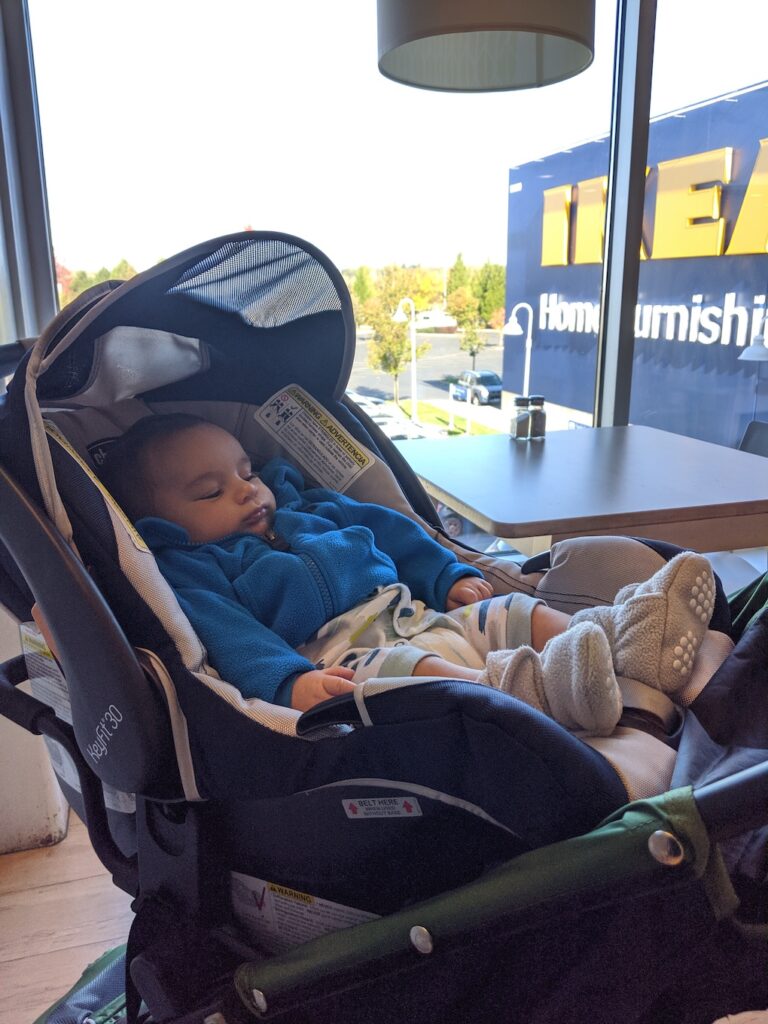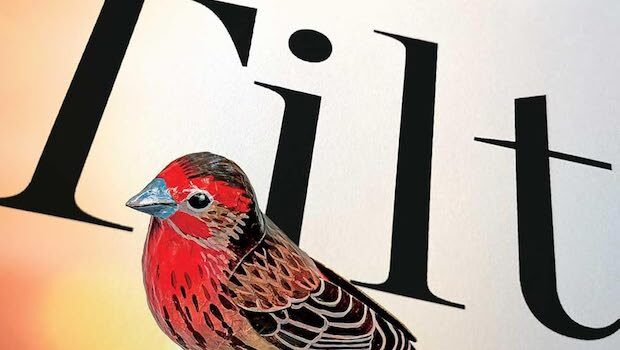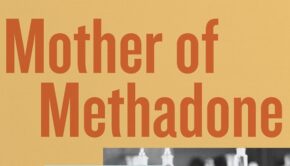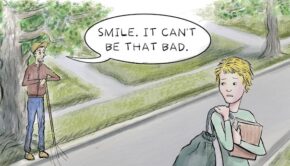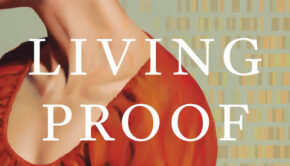Not So Little Earthquakes
The first thing to know about the novel Tilt by Emma Pattee is that the Cascadia Earthquake is real, it just hasn’t happened yet. One of my besties grew up and lives in Portland, Oregon and she was the first person to explain Cascadia to me. When she was done, I wanted her to move. The basics are this: Tectonic plates meeting, and sliding over one another, in a 600-mile fault line that begins along northern California and continues all the way up through British Columbia. Every few hundred years there’s an earthquake; the last one was in 1700 and it sent a tsunami to Japan. In the ultimate mindfuck, the earthquake could happen today. Maybe by the time you read this interview, it will already have happened. (My stomach flips, imagining this.) Maybe it won’t happen for another hundred years. The uncertain certainty of a coming catastrophe: It’s easy to be flabbergasted, I think. To wonder how Oregonian parents do it. Leave for work every morning. Kiss each other goodbye. Drop their kids off at school.
I bet you know what I’m going to say.
They do it the same as we all do it. I mean, it’s essentially the key to human consciousness, the living and loving with the ever-present threat of our own mortality. Remember 9/11? Remember how after (and still) everyone noted, almost compulsively, what a gorgeous, sunny day it was; the best of what New York can offer, weather-wise. A day when even a pile of garbage could look charismatic. Not a cloud in the sky. And from that perfect blue sky came mass death, and the remaking of our lives and the entire geopolitical landscape. Who could know? It was just a Tuesday.
But in Portland, where Tilt is set, it opens on that day. We meet Annie, the protagonist, 37 weeks pregnant, and shopping for a crib in IKEA. She is swollen-footed, grumpy, tired, worried about her marriage and about to spend more than she has on the finest of IKEA’s offerings because isn’t that what you’re supposed to do? To be a good mother? Spend? She is inside the IKEA when the earthquake strikes. The novel unspools over the course of that one day, as Annie walks her destroyed city, determined to find her husband. Every step of the way, she is speaking to her in utero baby, “Bean.” Interwoven through Annie’s slow and perilous walk through the aftermath of the earthquake, Annie tells Bean of the art she was too scared to make, the ruts she has worn her own life into, the fading of her love for Dom, Bean’s father, her fears that their marriage is already over before Bean has had a chance to be born.
Pattee’s background as a climate journalist informs the rigor and accuracy of the telling of the earthquake. Pattee was determined to make its effects as accurate as possible. The Portland that Annie moves through is visceral and real; Annie feels like a fellow parent you might mean in a playground. The resulting novel feels bone-shakingly familiar; this is what I might/you might/we might be like in this catastrophe. I’ll just say, when I finished the book, I wanted to hurry to school and pick my kids up early.
But as much as it’s a study of this earthquake, Tilt is as much a study of our relationship to notions of security and risk, and how we navigate between these two poles. Maybe we find pleasure in the material fixings of safety and nurture. Maybe setting up a nursery helped prepare you for a child’s arrival. Maybe you could never bring yourself to assemble a crib. Either way a baby slept somewhere near you, and you loved them beyond reason, submitting yourself to the terrors of the unknown tomorrow. It is, as Pattee notes, the “wild, animal shit” that is birthing and parenting. Annie didn’t see it until the earthquake hit. After I finished, Tilt, it was all I could see. – Jade Sanchez-Ventura
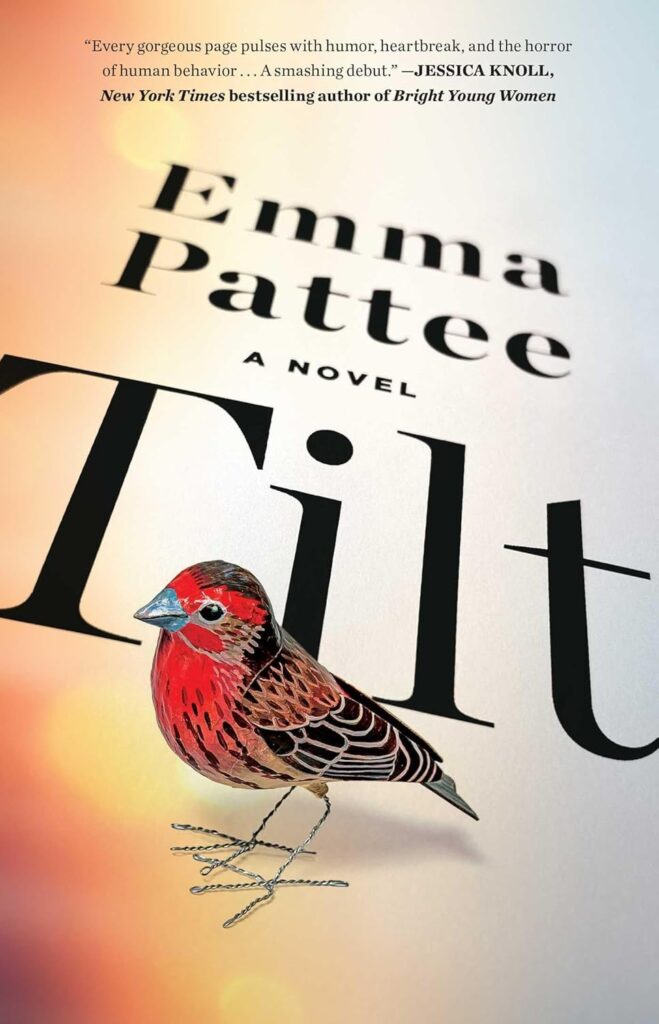
Jade Sanchez-Ventura: Where and when did Tilt begin for you?
Emma Pattee: I was seven months pregnant, and I was very, very anxious about the Cascadia earthquake. I had started to realize that if the earthquake hit while I was pregnant, it could be hard to find medical services, hard to even get water.
I was already feeling so much vulnerability as a pregnant person, which I think we don’t talk about enough. Suddenly it was hard for me if my husband was late getting home from work, and without the language for those fears, I didn’t have the words to get the help I needed.
And then one day I was at IKEA and I was shopping for a crib for my kiddo and the building started to shake and I thought, Oh my God. This is the earthquake. In fact, it was just a big truck. But the story was fully formed in my mind at that point. And the next day, I talked to my writing mentor and said, “I have an idea for a book.”
JSV: One of the most potent images throughout the book are the brick schools, and I was curious how that relates to the current situation in Portland in terms of preparedness for the Cascadia earthquake. And by extension, the relationship between fiction and research that you undertook for this project.
EP: Immediately, I knew that I wanted a brick school in the book. There could be no discussion of Cascadia in Portland without talking about brick schools. It was part of why I wanted the book to be scientifically accurate. There was no way I would scare parents, including my neighbors and my friends, unnecessarily. And there was no way I was going to pretend that the situation is better than it is with the schools. [See Pattee’s recent article about brick schools in Portland here.] For me, the ethical quest to have extreme accuracy in the school scene informed the entire book. The times that I wanted to give up on writing, what kept me going was the thought that it had potential to change some people’s minds, add some amount of energy or caring about the schools.
I’m not saying that art needs to get made with some kind of ethical goal. But in this scenario, there was a very real ethical component that I could not shy away from.
JSV: One of my dear friends lives in Portland and when she first talked me through the Cascadia earthquake, my reaction was essentially “I think I need you to move.” But also, because it is a work of fiction, it had me thinking about the meta questions that we all ask as parents—when we decide to go forward in a pregnancy in this day and age.
EP: That meta question is the heart of the book. The first time I was pregnant, I was asking myself, how do you love something that’s going to die? How do you birth something that’s going to die? And I couldn’t get an answer. Everyone was treating me like I was crazy. I was trying to prepare for this kid. And how do you choose such fragility? It was the most vulnerable question of my life, and the book for me is about Annie [the protagonist] asking that question. I always pictured it to the sound of her footsteps. How do you love something that’s going to die? How do you love something that’s going to die?
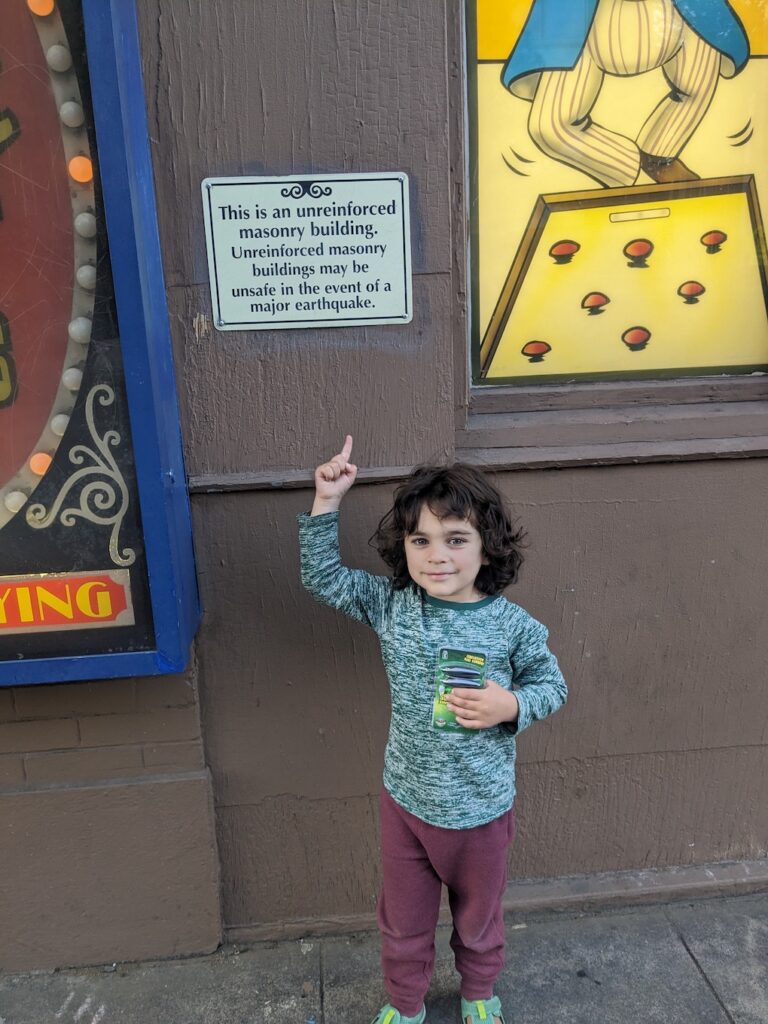
JSV: You show in the text our relationship to vulnerability, how courage is sometimes about the moments when you don’t have a choice.
EP: I did a lot of research into how people react after natural disasters. Often the people who do the most heroic stuff are the ones whose friends and family wouldn’t refer to as heroic. And when you ask them why they did it, it wasn’t like they were thinking, “I want to be a hero. I want to face my death.” They say, “I don’t even know why I did it. I just did it.” It was almost instinctual. There was a quote from a student who survived the Virginia Tech shooting, and he said, “In those moments you’re not even human anymore.”
Annie has a lot of journeys in this book, but the one that first drew me to the story is the journey from consumer to animal.
The focus on consumption as a pregnant person blew my mind. I wanted to show Annie in the beginning noticing brands, noticing stores. There’s so much focus on money and shopping. She starts in Ikea, and in the end, she is an animal. And to me, that was the experience of being a pregnant person. People just talk brands to you constantly and then you give birth and you’re like, “This is the wildest animal shit.”
JSV: There’s a conversation around art making in the book—and its relationship to risk taking. The portrayal of Annie speaks to the realistic challenge of making art in a consumer society.
EP: So many narratives are about the mother who gives up art and then finds it again end with massive success, as if that’s the only ending. Before kids I thought that could be the only happy ending involving an artist. For me, I wanted to write a book that has a happy ending (and for me this is very much a happy ending) that doesn’t come with commercial success. But she’s unstuck.
I think she can’t even see her husband, Dom, outside the context of success. I’m not arguing that women should stick with dudes who can’t pitch in and take care of their kids. But, I did not realize until after I wrote this book that basically the entire conversation around mothering choices, about mothering and arthood, is about money. But nobody talks about the money element of it. They just talk about the choices. Many women have said to me, “It’s so incredible that you wrote a book while having two kids.” And it would be weird if I was like, “let me tell you how much I paid for full time childcare. Let me tell you the safety net I have that allowed me to pay for that.” And because that’s not really the thing you say at the playground, the conversation becomes that I somehow was more stoic or more determined than this other artist.
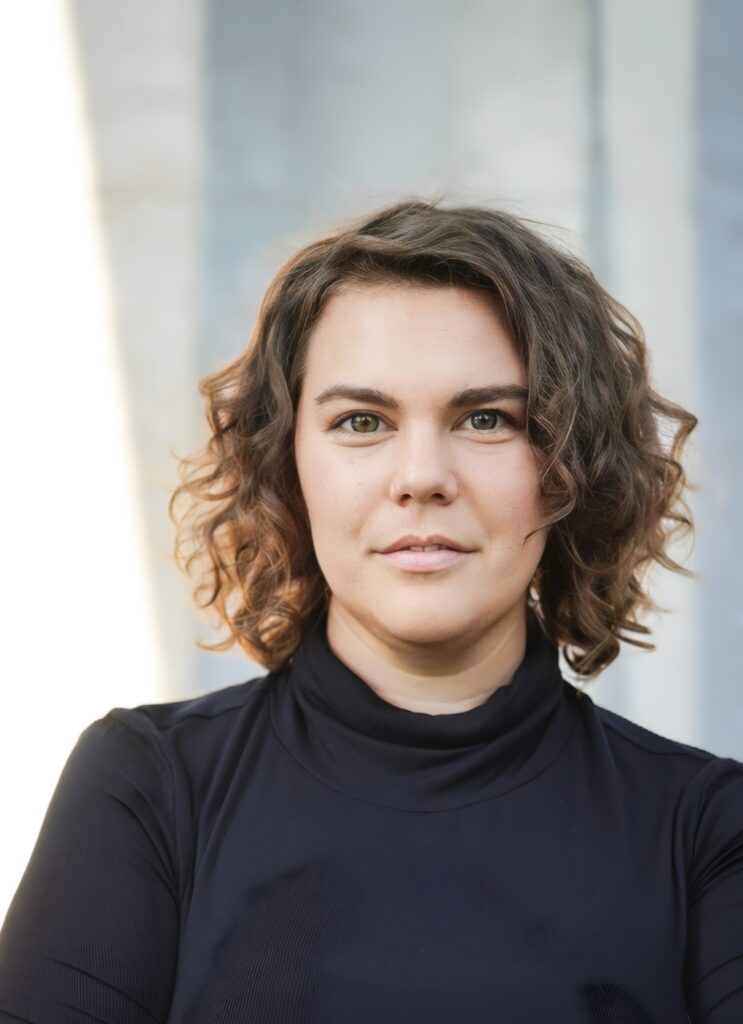
JSV: Speaking of the journey from consumer to animal, can you talk a little about the birth scene?
EP: It’s based on my birth story. I had a very, very fast homebirth. The whole birth lasted about an hour and a half, and I knew during it, “This will be the birth scene of my book.” A lot of people don’t think that Annie’s birth story is realistic. If I hadn’t lived it, I don’t know if I would think it was realistic, either. But that’s how it happened.
JSV: As we’re closing, I keep returning to this idea, this throughline, of Annie’s evolving relationship to risk…
EP: I had an experience where I was hiking with my husband in Tahoe. We were on a trail and someone came running and said, “There is a giant brown bear right behind me.” We’re terrified and I say to my husband, who was carrying our one year old on his back, “You go ahead and let me walk behind so if the bear attacks anybody it will attack me.” And he was like, “Bye! See ya!”
It was a profound moment—neither of us was performing parenting, performing protection. We certainly weren’t like, “I’m going to take a risk.” When you live in the vulnerability of the love, risk taking is the natural outcome. How do you love something that’s going to die? The answer must be hope, and curiosity about life. I found meaning in the intensity and beauty of connection. That ultimate risk, of loving things that are going to die, is outside of capitalism, untouched by fame, success, consumerism. I had to write this book so I could find that answer.
